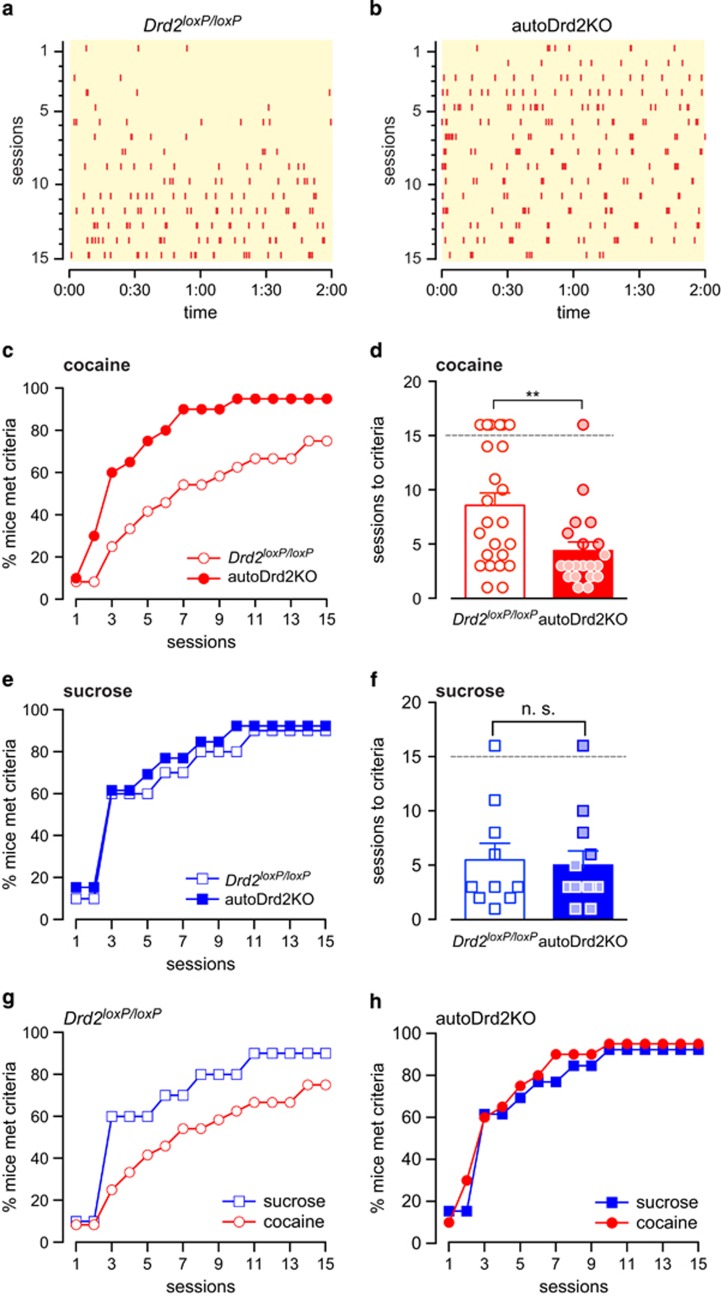Figure 3.
Enhanced acquisition of cue-paired intravenous cocaine self-administration in autoDrd2KO mice. (a, b) Representative responding of a Drd2loxP/loxP (a) and an autoDrd2KO (b) mouse across 15 training sessions. (c) Percent of mice from each genotype that met cocaine self-administration acquisition criteria on each day of training. (d) Number of sessions required to meet acquisition criteria for cocaine self-administration for each individual animal (symbol) and the mean for each genotype (bars). Symbols above the gray dotted line represent mice that failed to reach acquisition criteria by session 15 (p=0.006, n=24–20). (e) Percentage of control (open blue) and autoDrd2KO (solid blue) mice that met criteria for acquisition of sucrose self-administration throughout the sessions (n=10–13). (f) Number of sessions required to meet acquisition criteria for sucrose self-administration for each individual animal (symbol) and the mean for each genotype (bars). Symbols above the gray dotted line represent mice that failed to reach acquisition criteria by session 15 (n.s., p=0.79, n=10–13). (g, h) Comparison of the acquisition curves for cocaine (red) and sucrose (blue) displayed by Drd2loxP/loxP (g) and autoDrd2KO (h) mice. Reported error is SEM.

